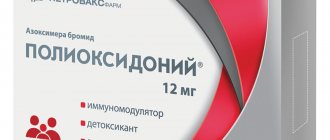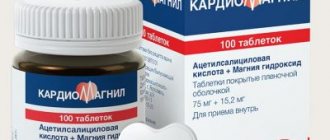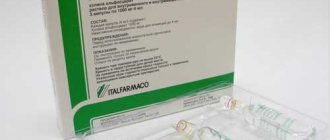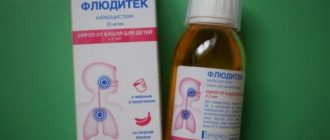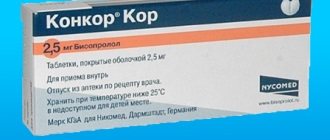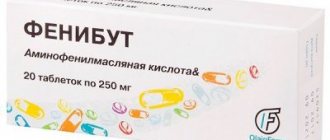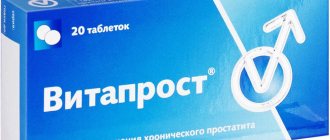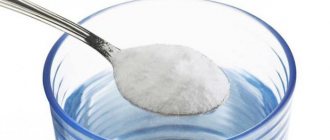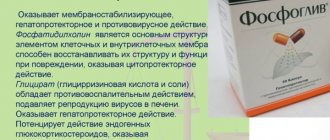Nasonex is a topical hormonal drug used in the treatment of rhinitis of allergic etiology. It is also often prescribed for sinusitis or complicated runny nose.
This drug is highly effective and well tolerated. But if the patient is intolerant of the active substance, it is necessary to select an analogue of Nasonex or a cheaper replacement, since the cost of the original drug is quite high.
Indications for use
The main active ingredient of Nasonex is mometasone furoate, a glucocorticoid. Each dose contains 50 mcg of a hormonal substance. Thanks to this, the drug exhibits a pronounced anti-inflammatory and antiallergic effect, and therefore the main indications for use are:
- seasonal and chronic allergic rhinitis;
- acute course of sinusitis as part of complex therapy;
- exacerbation of chronic sinusitis;
- prevention of allergic rhinitis with moderate or severe course;
- acute form of rhinosinusitis with mild or moderate course;
- nasal polyps, which is accompanied by difficulty breathing and decreased sense of smell.
The medicine has a prolonged effect. According to reviews, the patient will notice noticeable relief after the first use.
Who is Nasonex indicated for?
The use of the drug to prevent the appearance or exacerbation of allergic rhinitis is allowed for adults and children over 2 years of age. Nasonex helps:
- with allergic mucus discharge from the nose;
- with pathological reactions to pollen during flowering of plants, animal hair, exposure to other antigens.
In complex therapy, the drug is used to eliminate acute and chronic sinusitis. In these cases, its use is indicated for patients over 12 years of age.
Dosage and rules of use
The first use of Nasonex begins with an initial preparatory “calibration”, which consists of 6-7 single presses of the dosing device.
This will establish a typical delivery of the main component, in which each press releases about 100 mg of mometasone furoate, that is, 50 mcg of pure glucocorticoid. “Calibration” must be repeated if the drug has not been used for 2 weeks.
Before each spraying, the bottle is shaken, since the drug is a suspension in which mometasone particles are evenly distributed.
If the nozzle becomes clogged, it must be carefully removed, rinsed under cold running water, and dried.
To achieve the maximum therapeutic effect, the drug should be used correctly:
- clean the nasal cavity of mucus and crusts using saline;
- close one nasal passage and insert the dispenser into the other;
- Raise your head slightly, then inhale deeply through your nose and press the spray nozzle;
- exhale through your mouth.
For children from 2 to 11 years of age, the therapeutic dose is one injection (50 mcg), for adolescents from 11 years of age and adults - 2 injections, that is, 100 mcg. Instructions for use suggest several treatment regimens with Nasonex:
- treatment of seasonal and chronic runny nose of an allergic nature: for adult patients and children over 2 years of age, 1 therapeutic dose per nostril once a day. Maintenance therapy - 1 press, that is, 50 mcg of mometasone. In severe cases, a one-time dose increase to 4 presses is permissible, that is, 400 mg.
- As part of the auxiliary treatment of acute sinusitis: adult patients and adolescents over 12 years of age, one dose twice a day. In the absence of positive dynamics, the dose may be increased to 4 injections 2 times a day.
- Nasal polyps: Adults and adolescents over 18 years of age, therapeutic dose twice daily. After the symptoms have reduced, the drug is used once a day in the same dose. As a preventative measure, Nasonex should be used 20 days before the flowering of a plant whose pollen is a potential allergen, at the above dose once a day.
The dose of the drug is selected individually for each patient by the treating allergist or otolaryngologist.
Release form
- Dosed spray Nasonex Sinus. Polyethylene bottles 10 g, packaging No. 1. Each bottle is equipped with a protective cap and a spray nozzle. The contents of the bottle are designed for 60 doses, each of which contains 50 mcg of active substance.
- Nasonex metered spray. Polyethylene bottles 18 g, packaging No. 1. Each bottle is equipped with a protective cap and a spray nozzle. The contents of the bottle are designed for 140 doses, each of which contains 50 mcg of active substance.
The contents of the bottle are an opaque suspension of almost white or off-white color.
Contraindications and side effects
Nasonex is contraindicated in cases of hypersensitivity to the components of the drug, tuberculous intoxication of the body, violations of the integrity of the nasal mucosa (the drug reduces the rate of tissue epithelization), viral, fungal, and bacterial infections of the nasal cavity.
Since appropriate clinical studies have not been conducted on the use of the drug in the treatment of nasal polyps in children under 18 years of age, Nasonex is used in this category of patients only as prescribed by a doctor.
For pregnant women and during lactation, the drug is prescribed only if the benefit to the mother outweighs the risk of possible complications in the development of the child.
When using Nasonex, side effects may occur such as migraine attacks and severe headaches, nasal bleeding, sore throat, burning sensation in the nose, irritation of the mucous membrane and the appearance of erosions, very rarely - perforation of the nasal septum, disruption of the adrenal glands, increased intraocular pressure, deterioration of vision and taste.
It is extremely rare to develop immediate allergic reactions, including bronchospasm, angioedema, and anaphylaxis.
special instructions
The bottle is calibrated. If the product is not used for more than 14 days, recalibration is required.
With long-term (several months) use of the spray, you should undergo periodic examinations by an otolaryngologist for possible changes in the nasal mucosa. If a local mycotic infection of the pharynx/nose develops, you should stop using Nasonex or undergo a course of special treatment.
Particularly careful medical supervision is required for patients who use Nasonex simultaneously with systemic corticosteroids, as well as patients to whom the drug was prescribed after discontinuation of corticosteroid therapy.
Withdrawal of systemic corticosteroids often leads to adrenal insufficiency, which may require appropriate measures. When switching from systemic corticosteroids to the use of a nasal spray, some patients may experience symptoms of corticosteroid withdrawal:
- joint and/or muscle pain;
- depression;
- feeling tired.
A change in therapy may cause symptoms of previously developed allergic diseases (for example, eczema or allergic conjunctivitis ), which were previously masked by systemic glucocorticosteroid .
In patients receiving treatment with corticosteroids, immune reactivity is potentially reduced. For this reason, they should be warned about the increased risk of infection if they come into contact with an infectious patient (including people with measles or chickenpox ) , and about the need to consult a doctor if such contact occurs.
In placebo-controlled trials in children, when the drug was used at a dose of 100 mcg for a year, growth was delayed in children. Also, with prolonged use of Nasonex, there are no signs of suppression of the function of the hypothalamic-pituitary-adrenal system .
In cell culture, mometasone furoate showed tenfold greater activity compared to other steroids , including Betameson , Dexamethasone , beclomethasone dipropionate , in suppressing the synthesis/release of interleukins (IL) 1, 5 and 6, TNF-α, as well as IL-4, IL- 5 and Th2 cytokines from human CD4+ T cells.
By suppressing the production of IL-5, the drug exhibits six times greater activity than betamethasone and beclomethasone dipropionate.
Nasonex's analogues are cheaper
Sometimes it becomes necessary to choose cheaper Nasonex analogues, the effectiveness of which will not be lower than the original product. The price of a drug with a volume of 60 doses varies from 420 to 500 rubles, 120 doses - from 700 to 870 rubles.
Analogs exhibit similar effects, but may differ in composition. At the same time, they also effectively cope with manifestations of allergies, inflammation, and asthma attacks.
The only generic (with the same composition as Nasonex) is the Czech “Desirint” costing 350 rubles for 140 doses. Both medications are identical, but the list of side effects of the substitute is longer and may occur during administration: anxiety, hyperactivity, sleep disturbances, glaucoma, cataracts.
The list of drugs with similar effects and lower cost is as follows:
- "Rinoclenil" (beclamethasone) - 200 doses 370 rubles;
- "Flixonase" (fluticasone propionate) - 120 doses 780 rubles;
- "Nazarel" (fluticasone propionate) - 120 doses 400 rubles;
- "Avamys" (fluticasone furoate) - 120 doses 725 rubles;
- “Nasobek” (beclamethasone) - 200 doses, 180 rubles;
- "Tafen nasal" (budesonide) - 200 doses 420 rubles;
- “Polydexa” (dexamethasone, phenylephrine, polymyxin, neomycin) - 295 rubles;
- "Sinoflurin" (fluticasone propionate) - 120 doses 390 rub.
Only a doctor can select a similar substitute for Nasonex based on the previously collected anamnesis and the severity of symptoms. Self-medication in this case is dangerous due to side effects and can worsen the patient’s condition.
Analogues and substitutes
Since Nasonex nasal spray is considered an expensive drug, pharmacies often ask for cheaper analogues. There is a fairly large list of drugs with a similar mechanism of action and indications, but different costs and features of use.
Avamis
The drug Avamis is considered the closest analogue of Nasonex, since it corresponds to it in terms of the mechanism of action, and the list of indications and contraindications is almost the same. It is considered an effective medicine - it reduces adenoids, the severity of symptoms and does not dry out the nasal mucosa. There are practically no side effects, so it can be used in childhood (after 2 years), as well as during pregnancy, but use for preventive purposes is prohibited.
Flixonase
Flixonase and Nasonex contain similar active ingredients, so the instructions for use are almost the same. Flixonase has a pronounced anti-inflammatory effect and relieves allergy symptoms, so it does not require additional use of antihistamines.
One of the key differences between the drugs is that Flixonase is used only from the age of 4 - when treating adenoids in young children, it is necessary to choose a different drug.
Nasobek
Nasobek nasal spray belongs to the same pharmacological category as Nasonex - corticosteroid (hormonal) drugs. It has a pronounced effect on the body, stops inflammatory processes and is considered one of the most effective medicines used for diseases of the ENT organs of an allergic nature.
When using Nasobek, you should carefully study the instructions for use, since its list of contraindications is quite wide. These include fungal infections, frequent nosebleeds, age less than 6 years, respiratory pathologies and glaucoma.
Nazarel
The drug is available in the form of a nasal spray based on synthetic corticosteroids and is considered a complex remedy. The effect of use is noticeable within a few hours and lasts quite a long time. The mechanism of its effect is as follows:
- vasoconstriction;
- reducing the amount of nasal discharge;
- elimination of swelling;
- relief of inflammatory processes;
- suppression of the immune response to allergens.
The disadvantage of Nazarel is the ability to cause side effects, which include irritation and dryness of the mucous membrane, nosebleeds, rash, cataracts, changes in taste in the mouth, and headaches.
WE RECOMMEND THE ARTICLE!
For the treatment of runny nose, the most popular drugs are silver-based, such as Sialor and Protargol. Read more >>
Nosephrine
The Russian-made drug is a structural analogue of Nasonex, and its effect is based on a similar substance - mometasone furoate. It is used to treat chronic and acute sinusitis, rhinitis of allergic origin, adenoids and other conditions accompanied by a runny nose, swelling and inflammation of the ENT organs.
The differences between the drugs lie in the list of additional components, and Nasonex includes phenylethyl alcohol.
If you are prone to allergies to chemicals, you should choose a drug for the treatment of adenoids carefully, after studying the list of additional components.
During clinical studies, Nasonex showed a longer and more pronounced effect, passed all clinical trials and proved its safety. Nosephrine is considered a cheap generic drug, but of sufficient quality and effectiveness.
Desrinitis
Desrinit nasal spray is produced by an Israeli manufacturer and has a list of indications and contraindications similar to Nasonex. There are minor differences in composition - the action of the drugs is based on mometasone furoate, but the additional ingredients are slightly different. They are sold in pharmacies in the form of a spray and are good at relieving the main symptoms of allergic diseases, including adenoids.
The only difference is the cost - Desrinit is an order of magnitude cheaper than Nasonex, so it is often chosen as an effective substitute for the drug.
Momat Reno
In addition to the main active component mometasone furoate, Momat Rino contains azelastine, an antihistamine that enhances the therapeutic effect. The drug is used for the symptomatic treatment of rhinitis of allergic origin, and has a mechanism of action similar to Nasonex.
There are no significant differences between Momat Rino and Nasonex, but the first drug contains an additional component, so its list of contraindications and side effects is wider. Nasonex, in turn, is considered a safer and more effective drug that has a quick effect and long-lasting effects.
Polydexa
A combination drug produced in France, which contains dexamethasone, phenylephrine, polymyxin, neomycin. It cannot be called a complete analogue of Nasonex, since the compositions of the drugs are different, but their mechanism of action is practically the same.
Due to the content of additional components, Polydexa has a wider list of indications, has an anti-edema, vasoconstrictor and antibacterial effect, and does not require additional use of drops and antibiotics. At the same time, the list of contraindications for the drug is also longer than for Nasonex - in particular, the spray can only be used after 15 years.
Tafen Nazal
The main active ingredient of Tafen Nasal is budesonide, a glucocorticosteroid hormone, which by its mechanism of action is almost identical to mometasone. It has anti-inflammatory and decongestant effects, relieves the symptoms of allergic rhinitis and adenoids.
Unlike Nasonex, the therapeutic effect of using Tafen Nasal occurs only after 2-3 days, while Nasonex begins to act after 12 hours.
The advantage of Tafen Nasal is that it is considered a safer and milder remedy, so it can be used for several months to treat non-allergic rhinitis.
Nasonex or Avamis - which is better?
Avamis is a substitute for Nazonex, which is closest to it in terms of its mechanism of action. It is also allowed to be used in the treatment of children over 2 years of age, and the list of indications, contraindications and possible side effects is the same.
Avamis is better for children due to the following advantages: low cost and effectiveness in the treatment of adenoiditis in children, which is manifested by stabilization of breathing, adenoids do not enlarge, the nasal mucosa does not dry out, so there is no nasal bleeding, which is often observed in childhood when using Nasonex.
However, Avamis cannot be used as a prophylactic agent, unlike Nasonex.
How to treat a small child?
Young children under two years of age are not prescribed medications based on mometasone. For this reason, Nasonex is not used against allergies in infants; analogues for children will work with a different active component. Usually they prefer natural medicines or drugs with a milder and safer effect.
Most often, non-hormonal drugs are prescribed for children, since they are the safest of modern allergy sprays. If you follow the advice of Dr. Myasnikov, you need to be careful when choosing medications to eliminate allergic rhinitis in a child.
The best solution is to use a mixture of essential oils, moisturizers and antihistamines in combination.
Steam inhalation with essential oils can relieve a runny nose and improve the condition without harm to the child.
Non-hormonal drugs include Zyrtec and Ketotifen, which are prescribed from six months. For moisturizing, sea water-based sprays are used, for example, Aqualor, which is convenient to use on a child. Their packaging allows you to accurately direct the spray stream into the baby’s nasal passage, while thoroughly irrigating his mucous membrane.
Nasonex or Flixonase
Flixonase is not the cheapest analogue of Nasonex. However, these drugs contain similar active ingredients, so the indications and contraindications for use are the same.
However, the original is approved for use from 2 years of age, and flixonase - only from 4 years of age.
Flixonase, unlike Nasonex, helps eliminate lacrimation, swelling, redness and itching of the eyelids. Thanks to this, the drug can be used without antihistamines, as monotherapy.
Reviews of Nasonex
Reviews of Nasonex Sinus/Nasonex are mostly good. More than 80% of patients who used the drug noted a very rapid improvement in their condition, calling the drug an indispensable assistant in the fight against seasonal and year-round allergic rhinitis .
Moreover, some patients who have been on vasoconstrictor drugs claim that it was Nasonex spray that helped them get rid of this addiction.
However, there are also those for whom the drug did not suit or did not give the expected result, which may be due to the body’s individual reaction to the prescribed treatment.
A separate group of reviews are reviews of Nasonex for children. For children, the spray is most often prescribed for adenoids , if the proliferation of lymphoid tissue is a consequence of allergies . Despite the fact that the drug is hormonal, mothers believe that it is better to undergo treatment with it than to send the child for surgery.
If we talk about the effectiveness of Nasonex for adenoids , then positive dynamics become noticeable quite quickly, but only if the treatment regimen is chosen correctly.
The big advantage of the drug is that its active substance is absorbed in negligibly small quantities and does not have systemic activity. Thanks to this, Nasonex, unlike most analogues, can be used from the age of two.
It should be noted that there are, although extremely rare, reviews in which mothers who used Nasonex to treat their child complain that after the end of the course of treatment, all the old drugs that were prescribed to the child before do not work and do not even provide temporary relief.
Reviews from doctors about Nasonex allow us to conclude that endonasal corticosteroids do not completely cure polypous rhinosinusitis and allergic rhinitis , but are capable of completely - and as quickly as possible - stopping the symptoms of allergic rhinitis and significantly delaying the relapse of nasal polyp .
Drugs in this group are the only drugs whose clinical effectiveness in chronic polypous rhinosinusitis is confirmed by evidence-based medicine.
Nazarel or Nasonex - which is better?
Nazarel has a lower cost compared to Nasonex. It has a similar principle of action, exhibits a decongestant, anti-inflammatory, antihistamine effect, which appears 3 hours after the first injection.
Nazarel also helps reduce itching in the nose, eliminates sneezing, rhinitis, nasal congestion, discomfort in the maxillary sinuses, and alleviates eye allergy symptoms.
The therapeutic effect lasts for 24 hours after a single use of the spray. In addition, fluticasone has virtually no systemic effects, without affecting the functioning of the hypothalamic-pituitary-adrenal systems.
However, like Flixonase, according to the instructions, Nazarel is used to treat children over 4 years of age. Therefore, only Nasonex is suitable for patients under this age.
Atherosclerosis and drugs based on mometasone
There are no direct contraindications for the use of this active substance in atherosclerosis, just as the effect of combining it with drugs of the statin and fibrate group is unknown. However, it must be borne in mind that with severe manifestations of atherosclerosis, sprays with mometasone can be dangerous. They significantly narrow blood vessels in the local area, so thrombosis of the vessel with plaques is possible.
Mometasone can reduce the therapeutic effect of using tablets for the treatment of atherosclerosis.
How to properly take medications for atherosclerosis in combination with allergy medications can be decided based on an analysis of the patient’s condition. If cholesterol is significantly elevated, medications that do not have such an active effect on the cardiovascular system will most likely be prescribed.
The best solution is to use natural substances to relieve swelling and nasal congestion.
Vasoconstrictor sprays and medications for atherosclerosis are not recommended, whether they are hormonal or not. The problem is that due to increased cholesterol, blood vessels lose their elasticity and become loose and brittle. A sharp contraction and expansion of their walls can lead to injury, thrombosis and rupture of blood vessels.
If you have high cholesterol, you must follow a diet and lead a healthy lifestyle.
If necessary, you can use antihistamines in the form of tablets, the effect of which will be slower. Due to the gradual impact, they will not have such a destructive effect on the body, but will help stop an allergic attack. When selecting therapy, you need to weigh all the risks and adjust the treatment regimen, taking into account the addition of an antihistamine.
Nasonex or Nasobek
Nasobek is a cheaper replacement than Nasonex; the drug contains beclomethasone. Because of this, it exhibits an immunosuppressive effect, helping to restore local immunity.
Another advantage of nasobek is the reduction of mucus production, good tolerance by patients and the possibility of using it in the treatment of vasomotor rhinitis.
The disadvantages of the drug include the age restriction, according to which Nasobek can be used by children over 6 years of age. It is also not used as a prophylactic.
Nasobek is contraindicated in the first trimester of pregnancy.
Naphthyzin
A fast-acting vasoconstrictor for infectious rhinitis, hay fever, and sinusitis accompanied by debt. The drops almost instantly reduce the lumen of the capillaries; after just a minute of their use, breathing becomes freer. The effect lasts up to 6–8 hours. It is necessary to use Naphthyzin only when there is severe congestion, for example, at night. The course is no more than 5 days. Long-term use can cause addiction and decrease the sensitivity of blood vessels to the active substance. Naphthyzin should be used especially carefully in children. To eliminate a runny nose, it is allowed from 1 year.
Desrinit or Nasonex
Desrinit is the only drug synonymous with Nasonex in terms of the active substance; it can be used intranasally and for inhalation, which is an undeniable advantage.
The active substance does not exhibit systemic effects because it has low bioavailability. Also, during treatment there is no effect of the drug on the state of the immune system.
The medicine is prescribed to relieve allergic rhinitis, diseases that are accompanied by inflammatory lesions of the nasopharynx, and reduces the risk of developing complications after infectious diseases.
According to the instructions, the indications for use of Nasonex and Desrinit are similar.
pharmachologic effect
Manufacturer: SCHERING-PLOUGH LABO, NV, Belgium
Release form: dosed nasal spray
Active ingredient: mometasone furoate
Synonyms: Desrinit, Dithamal, Momat Rino, Momezal Allergo, Momenza, Mometasone Sandoz, Nasonex Allergy, Nosephrine, Rialtris Mono
Nasonex contains the corticosteroid mometasone, which has local antiallergic and anti-inflammatory effects. With the correct daily dosage, the drug does not have systemic effects or adverse reactions from other organs and systems.
The mechanism of action of the hormonal drug is based on inhibition of the production of mediators of inflammation and allergic reactions, which are derivatives of arachidonic acid - prostaglandins, endoperoxides. The active substance reduces the accumulation of macrophages and neutrophils, which reduces the production of exudate and the development of swelling.
Which is better - Nasonex or Tafen Nasal
Tafen Nasal contains budesonide. This substance is also a glucocorticosteroid hormone, so it effectively inhibits the development of the inflammatory process, allergies, and prevents the production of histamine (one of the mediators of sensitization).
Just like Nasonex, the analogue is contraindicated in the treatment of fungal, viral, bacterial infections of the nasal cavity, in pregnant women and during lactation, and in patients with liver failure.
The effect of the drug begins only on the 2-3rd day, while improvement after using Nasonex begins 12 hours after the first injection.
Tafen Nasal can also be used to prevent allergic rhinitis for several months and treat runny nose of non-allergic nature. However, it is allowed for children only after reaching 6 years of age.
The mechanism of action of the drug Nasonex
Mometasone inhibits the release of inflammatory mediators. At the same time, it activates the release of a blocker of the enzyme phospholipase A, which is responsible for the intensity of the immune reaction to antigens. When using a nasal spray, nasal discharge and accompanying other signs of allergy are reduced: conjunctivitis, lacrimation, swelling, itching, hyperemia.
The drug is effective against rapidly developing intolerance and helps prevent delayed allergies. Symptoms as a result of use are reduced at all stages of the pathology. They can be completely eliminated within 1–2 days from the start of treatment.
When applied topically, the drug substances are absorbed into the systemic bloodstream in a negligible concentration, without causing harm to the body.
Nasonex or Polydexa
Polydexa is a combination drug containing dexamethasone, phenylephrine, polymyxin and neomycin. Thanks to this composition, the drug exhibits decongestant, vasoconstrictor effects, and is also active against pathogens of bacterial infections.
In view of this, Polydexa has a wider list of indications, as well as contraindications. The drug is not prescribed to children under 15 years of age, with intolerance to the components, a history of ischemic stroke and convulsions, severe arterial hypertension, coronary insufficiency, glaucoma, herpetic infection.
When using Nasonex and its analogues, you should remember:
- These drugs cannot be combined with others containing glucocortisteroids, as the risk of overdose increases;
- drug withdrawal is carried out gradually to avoid the development of “withdrawal syndrome”;
- the sprayer should be washed under running water at least once a week;
- with long-term use, the functioning of the adrenal glands should be monitored;
- Such drugs are used strictly according to the scheme and regularly.
Nasonex analogues have a similar spectrum of action and an identical list of side effects. However, only the attending physician can choose the most effective one in each specific case. After all, self-medication can lead to hormonal imbalance.
Overdose
An overdose of mometasone develops with prolonged use of the drug in high doses, as well as in the case of simultaneous use of several corticosteroids. As a result, the function of the hypothalamic-pituitary-adrenal system .
The systemic bioavailability of mometasone is extremely low, so it is unlikely that in case of an intentional/accidental overdose, it will be necessary to take any measures other than monitoring the patient and then continuing to use Nasonex at the recommended dose.
Prices of Nasonex and its generics
The cost of Nasonex depends on the number of doses in the bottle.
So, for a bottle of 50 mcg/dose of 120 doses you will have to pay approximately 755 rubles. A bottle for 60 doses costs approximately 415 rubles. Prices for generics of this drug vary. There are analogues to replace Nasonex, which are much cheaper. As a rule, they are produced in Russia, so their price is much lower.
Important! Some of the drugs described below are extremely difficult to find in Russian pharmacies, including virtual ones. In view of this, the prices in the table below for Nasonex analogues may not be indicated for all drugs.
| No. | Analogue name | Release form | AK dosage, drug volume | Approximate price (r/r) |
| 1. | Desrinitis | Nasal spray | 140 doses | 371 |
| 2. | Mometasone | Nasal spray | 60 doses | Etc. 390 |
| 3. | Reasonel | Spray suspension | 0.05% for 18 g | 300 |
| 4. | Avamis | Nasal spray | 120 doses | 670 |
| 5. | Aldecin | Aerosol | 200 doses | – |
| 6. | Beclonazal Aqua | Spray | 200 doses | – |
| 7. | Beclomethasone | Aerosol nasal | 200 doses | 366 |
| 8. | Nazarel | Spray | 120 doses | 340 |
| 9. | Nasobek | Aerosol nasal | 200 doses | 177 |
| 10. | Polydexa | Spray | 15 ml | 343 |
| 11. | Rinoclenil | Spray | 120 or 200 doses | 390 |
| 12. | Tafen Nazal | Spray | 200 doses | 373 |
| 13. | Flixonase | Aerosol | 120 doses 60 doses | 714 438 |
| 14. | Flutinex | Aerosol | 120 doses | Etc. 450 |
Below is an overview of the above-mentioned sprays used instead of Nasonex for the treatment of allergic rhinitis.
